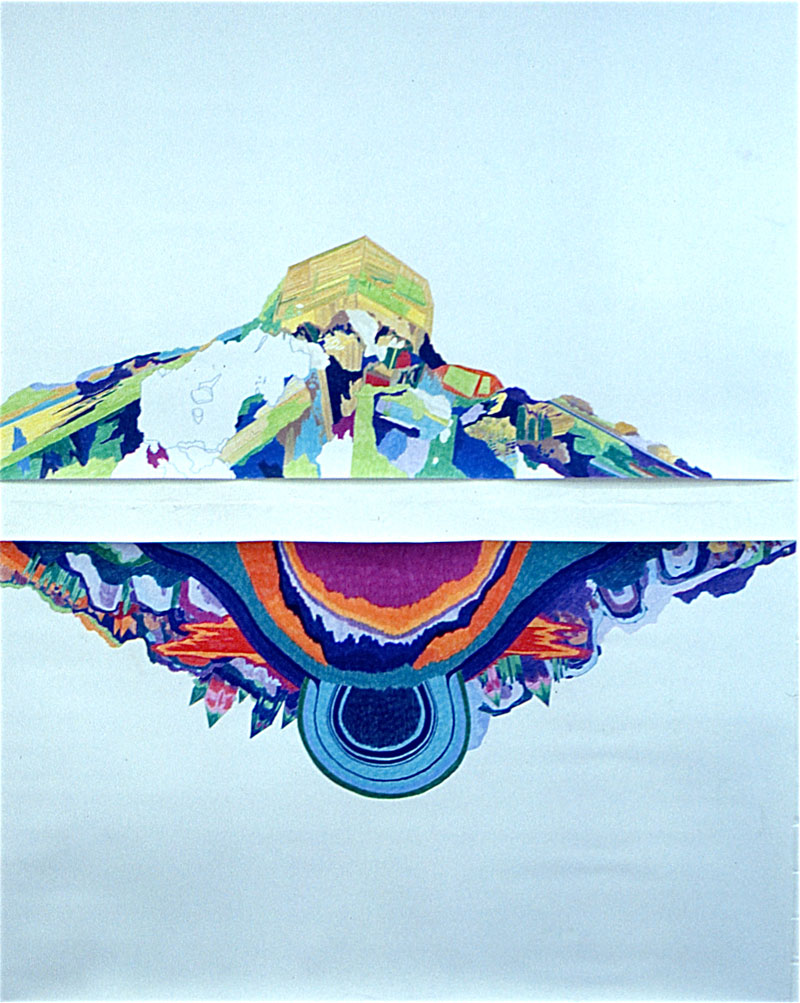Glaciology
MOP projects
23 June – 4 July 2004
 |
| Philipa Veitch, Interglacial / Portal, 1100mm x 1500mm, 900mm x 1500mm , coloured pencil, felt pen on paper, dimensions variable, 2004 |
 |
| Philipa Veitch, Glaciology, installation view (detail), coloured pencil, felt pen on paper, dimensions variable, 2004 |
 |
| Philipa Veitch, A Polar Day, coloured pencil, ink on paper, 1200mm x 1500mm, 2004 |
 |
| Philipa Veitch, Glacial Maximum, coloured pencil, ink on paper, 1200mm x 1500mm, 2004 |
|
“It was the sky, and the sea, those changing and endless days without dusk, nights or dawns; there time is abolished, that’s all. There time doesn’t flow, but it is split, without banks like a sea; and it mirrors in itself the course of the sun and the pilgrimage of the clouds, but it does not progress with them, and does not flow away…I let my watch run down, and I let day, year, and century, slip out of my mind; what use is it for man to know the minute or the hour if he lives in eternity?…it is again day: A Polar day, an enormous day, a day spun out of nothing but its first and last hours.” Karel Capek: Travels in the North. Glaciers and continental ice sheets embody the ebb and flow of global climate change – cryological recording mechanisms that preserve the changes in the Earths atmosphere over thousands of years. A glacier is a slow-moving and ancient river of ice formed from layers and layers of snowfalls. When snow falls, it carries with it the compounds that are in the air at the time, and where it falls in areas above freezing, such as in polar regions or at high altitude, the snow from one year falls on the top of that from the previous year without melting. Thus, as each year’s snowfall is buried by the next, the constituents contained in the snow are buried along with it, creating a continuous record of the climate dating from the glaciers inception. In addition to this, observations of the sometimes dramatic changes in the extent and thickness of these structures have been used as a more immediate indicator of long-term energy fluxes (ie climate change) at the earths surface. Glaciology is part of an ongoing series of exhibitions exploring the processes involved in events such as star formation and the geological and biological origins of the Earth. Informed by the idea of the habitable zone – an area in a star system where conditions may potentially support life – I have used this series to make intuitive connections between the idea of a cosmological habitable zone and an interior or psychic one – a habitat for consciousness. Glaciology considers the use of landforms such as glaciers to study both changes in geological evolution as well as the impacts of human activity on the Earths climate, taking these ideas as a starting point to make both an abstract and personal exploration of the complex interconnections between these long-term geological processes and the hidden ecologies of the human psyche. Philipa Veitch, June 2004 |

